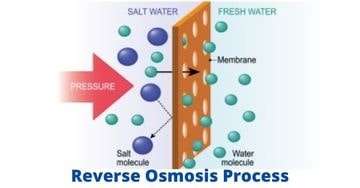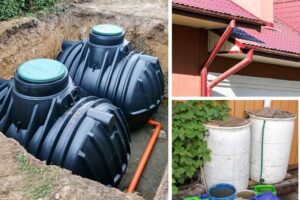What is Reverse Osmosis in water purification?
Reverse osmosis (RO) is the water circulation through a semi-permeable membrane that block salts or other solvents. Osmosis observed in all biological systems. It used in water purification for drinking, industrial use, other chemical and biochemical laboratories.
Suppose a semi-permeable membrane separates two different concentration of water. The water will flow from the side of lower concentration to the side of higher concentration. This natural process called the osmosis process. Suppose we do it in a reverse way by an external force—this process called reverse osmosis.
How does Reverse Osmosis Work?
The membrane consists of numerous thin layers or sheets of film. It was bound together and a spiral setup around a plastic tub. The material of the membrane is semi-permeable. When the feedwater flow passes across the surface area of the membrane, the pure pro molecule enters the surface, works around the spiral and gathers in the center tube. The remaining contaminants are concentrated and drain from the surface of the membrane down the point.
Do you need an RO filter in your home?
A RO water filter in your home can make it safe and safe drinking water. It’s a one-stop remedy for all water-borne illnesses and helps keep you healthy. RO filters can also enhance the flavor of the water and add the necessary minerals present in pure water.
The reverse osmosis system offers perfect water, is free of germs and parasites, and does not contain impurities. RO filters are great for offices and homes since they are less expensive than bottled water and have more minerals.
Advantages of Reverse Osmosis (RO):
- Reverse Osmosis performs a separation without water phase change. This process power consumption is low.
- Efficiently eliminates all types of impurities to some extent (particles, pyrogens, bacteria, colloids and dissolved inorganics ).
- New Reverse Osmosis systems are fully automated and designed for immediate start-up and stop via Interlock. Therefore, RO plants run with minimum labour.
- RO-purified water is more suitable to cook with. If you’re using a direct supply or tap water to cook, it may contain a shocking quantity of chlorine. With RO purified water, you’ll notice that your tea and coffee taste better.
- RO purifiers get rid of the high amount of heavy metals in water, making it safe to drink. It is also evident how ice cubes appear crystal clear, and the drinking water will taste much better once the TDS remains in place.
Disadvantages of Reverse Osmosis (RO):
- There is a possibility of a loss of vital minerals such as magnesium and calcium.
- A pre-treatment system required based on feed water quality; otherwise, RO membranes fouled.
- A substantial quantity of the water wasted during RO water filtering. Proper disposal of the water must be taken care of to limit the loss of water.
The Major Factor to Consider in Reverse Osmosis purification:
- Temperature: 76 deg. F is the perfect water temperature for RO. The maximum water temperature is 85 deg. F.
- Pressure: The water pressure higher, the better the quantity and quality of water produced. 60 psi perfect water pressure.
- Total Dissolved Solids: The higher number of contaminants dissolved in the water, the lower the amount of water produced. A high level of total liquid solids can be conquered with additional water pressure.
- Membrane. Different membranes have different properties. Some membranes produce more water; Some have good contaminant rejection ability and Some have more excellent resistance to chemical friction for longer lives.
Best Quality Reverse Osmosis Water Filter:
Reverse Osmosis is one popular water filtration system that uses residential & industrial. Supposed your residential areas supply water does not maintain the quality or depend on high TDS under groundwater in this situation you need reverse osmosis (RO) filtration.
Now maximum city resident peoples are using RO water filtration for drinking purpose. It is provided 100% safe & sweet drinking water. It is not much expensive & annual maintenance cost within your budget. Few best quality water filtration list are as given below,
Conclusion:
This article helps you the basic knowledge about Reverse osmosis process. We all are dependent on water, that means without water we can not lives. The surprising is 99% of people don’t know about water. The beauty of water characteristic if you learn, then you can understand.
My popular article “What is Water?” gives you all answer. I recommended to read this article & question me if you have any query.




